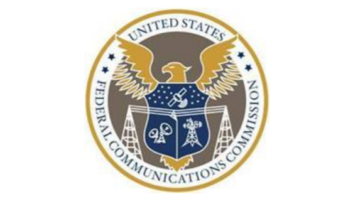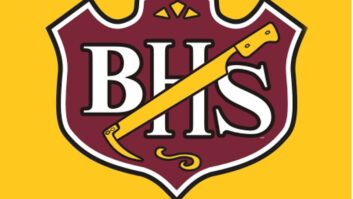The author is a regional VP of engineering with Clear Channel.

RALEIGH, N.C. — Through a group effort of a bunch of dedicated people, Clear Channel was able to complete outstanding upgrades for WDCG(FM) (a.k.a. “G105”) and its sister station WKSL(FM) in Raleigh N.C.
Our goal was to move each station’s 70 dBU contours over more of the population, thus increasing our reach and penetration in a growing top 50 market (currently No. 42).
We secured construction permits to locate both stations on a tower being vacated by Sinclair Communications that was located as close to the middle of the metro of Raleigh/Durham as possible. Clear Channel purchased the existing WLFL(TV) tower from Sinclair at the end of 2007 just a few months before our permit for WDCG was to expire. This put a very tight timetable in play for what would be one the best station improvements the market had seen in years.
Directional
I was challenged with placing a directional license and a nondirectional license on a wide-faced tower that was already loaded to maximum structural levels.
Sinclair TV had to continue to operate their NTSC full-power UHF and would not vacate prior to our permit expiring. This meant that any additions to the tower had to present the lightest possible wind load and physical loading. (The necessary tower modifications became redundant only 10 months later after Sinclair removed the analog TV gear. Oh well!)
Enter Dielectric/SPX Communication Technology. (Dielectric is now operating under the name SPX Communication Technology; it continues to sell its full range of products under the Dielectric brand.)
Through past changes and upgrades, I was familiar with Dielectric products and had had successful experiences. After researching wind loads and weights of different antenna brands, I chose to purchase the DCR-M6ER for WDCG and the DCR-M6ERD for WKSL.
To simplify the project and expedite the design, we also chose to purchase the transmission line for both projects from SPX Communication Technology. The deciding purchase factors were both weight/tower impact and pure engineering design.
The DCRM series antenna employs a true circular radiator (continuous emission) as opposed to some other designs that depend on space to regenerate the circular emission by “firing” at a few equal points of the radiator. Some say the Dielectric design improves receiver reception.
After the order was placed, and optimization time scheduled for the Dielectric antenna chamber, I planned a trip to Raymond, Maine, to be present during antenna pattern tests.
Keith Pelletier, the company’s RF engineering director, worked within our specifications for requested coverage area for the WDCG non-directional antenna to concentrate on effective signal delivery in areas of concern. In addition, he made changes to the WKSL DA antenna to keep the axial ratios low as possible, thus ensuring minimum multipath issues within the proposed coverage for both antennas.
We faced a challenge with the pattern design due to significant obstructions inside the large-faced tower. Some obstructions would not remain after the analog TV shutdown. Pelletier and I tested different scenarios including keeping 19-inch waveguide and supporting smaller lines, or removing it, so we had knowledge of what the pending departure of Sinclair’s TV operations would do to our patterns and antenna performance later. What resulted were recommendations for each antenna installation, which we later implemented.
Future tower crews may wonder about one of those recommendations. Since WKSL’s was a directional antenna it was important that we not impact the licensed pattern with future tower changes and we certainly did not want to impact either station’s designed coverage. Therefore as a result of SPX Communication Technology’s pattern studies, I determined it was best to leave small sections of the large waveguide behind one of the antennas after the analog TV shutdown. This unique installation ensured no pattern changes, but looks very strange to most who see it.
Sales Engineer Matt Leland was instrumental in guiding us through the order process. When the hardware arrived we had everything we needed to make the installation go smoothly. SPX Communication Technology met all of the time limitations we placed on them for shipments.
After installation, I brought in test gear to complete the fine-tuning of each antenna. I was impressed by the bandwidth performance. With minor tweaks of the tuning sections the match is better than 1.01 on fundamental and 1.04:1 +/- 100 kW.
Fred Pace, our market engineering manager for Raleigh, was tasked with on-site construction management and scheduling. Fred came up with many unique solutions with the help of assistant Sol Samet. We hired Jim Coleman’s company, Southern Broadcast Services Inc., to complete the tower modifications and antenna installations.
The results and coverage far exceeded our expectations and goals. We “drove” the patterns of both stations using an Audemat FM-MC4 field strength meter with the Goldenear FM reception option. We found little if any multipath areas and were impressed by the performance of each antenna.
Today WDCG is a top market performer in the 12-and-over age group and by far has the best market signal, with WKSL right behind it. WDCG reaches well over 1.2 million people inside the city-grade 70 dBU contour and over 1.7 million inside the service-grade 60 dBU contour — a performance largely due to our new Dielectric antenna installations.
For information, contact Matt Leland at SPX Communication Technology in Maine at (207) 655-8139 or visit www.spxcomtech.com.
Radio World publishes User Reports on products in various equipment classes throughout the year to help potential buyers understand why a colleague made a given equipment choice. These are unpaid testimonials by users who have already purchased the gear. A Radio World Product Evaluation, by contrast, is a freelance article by a paid reviewer who typically receives a demo loaner.












